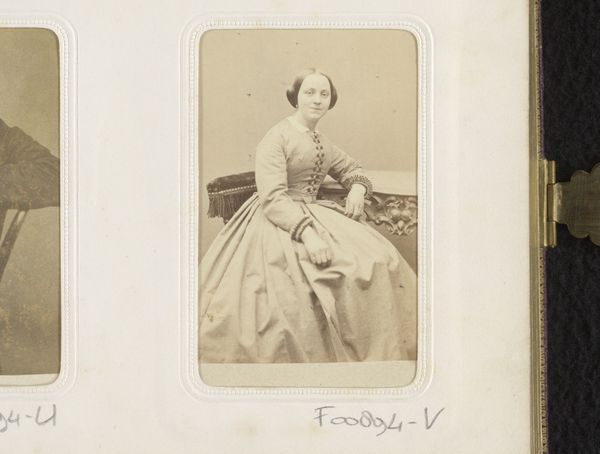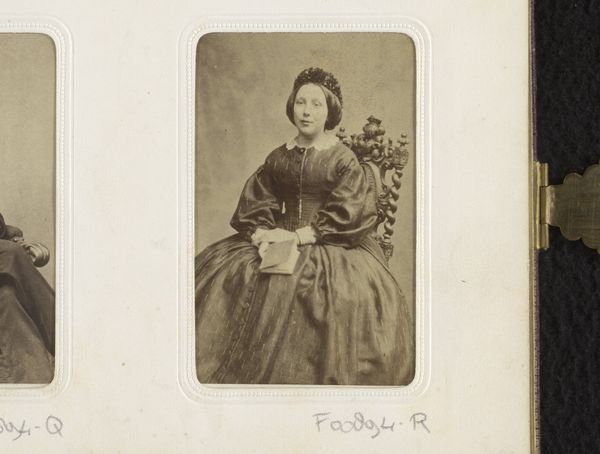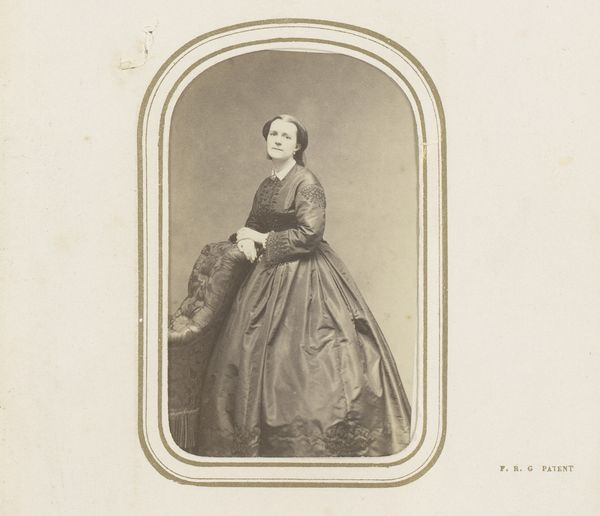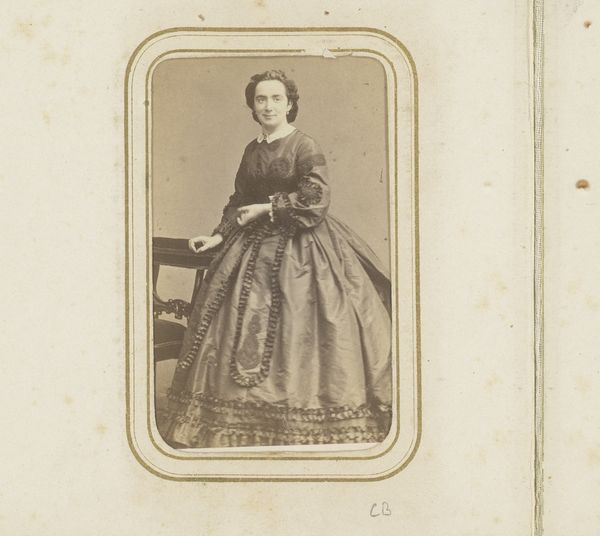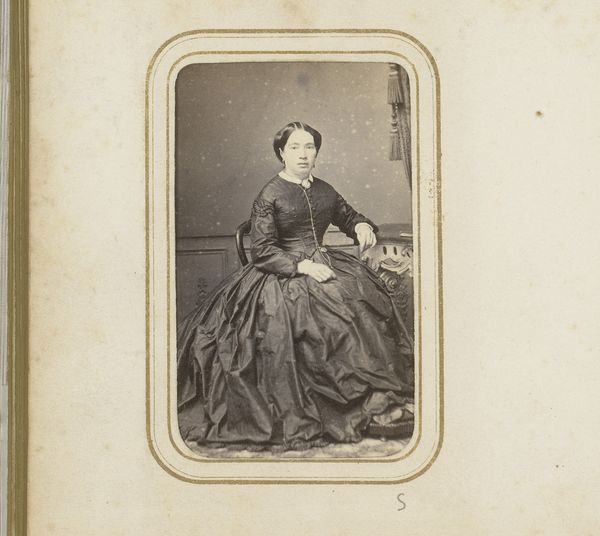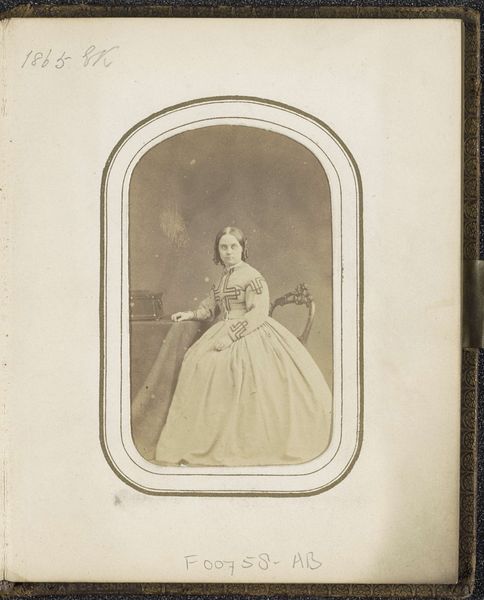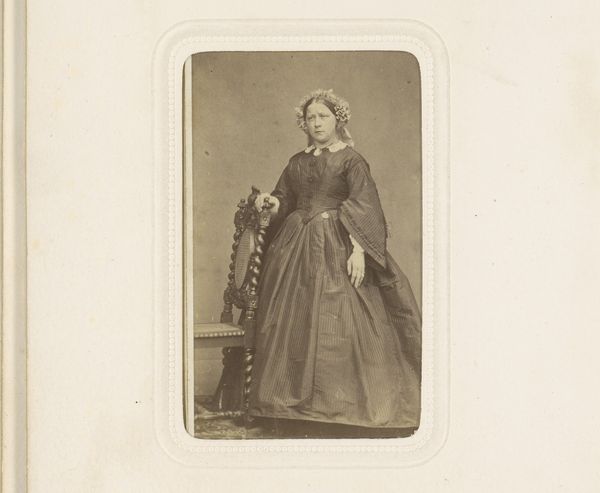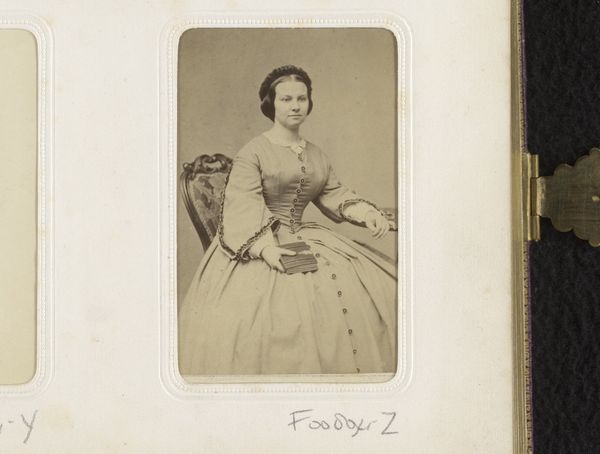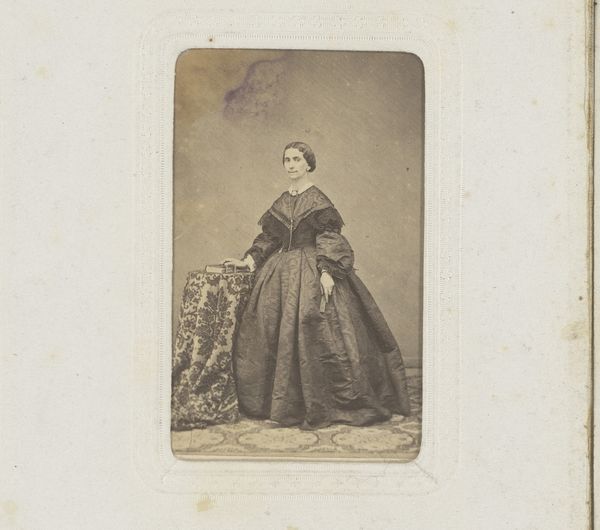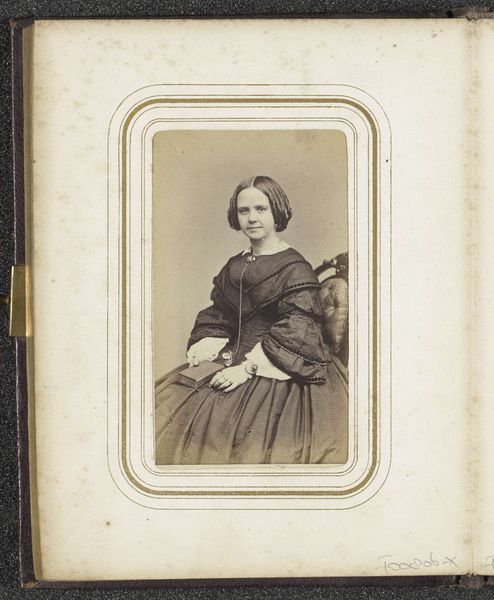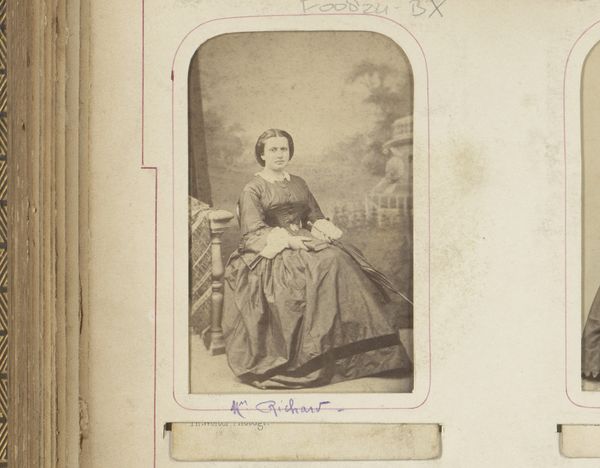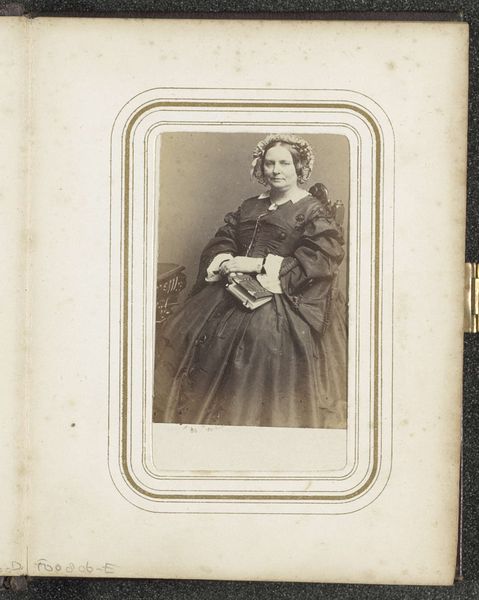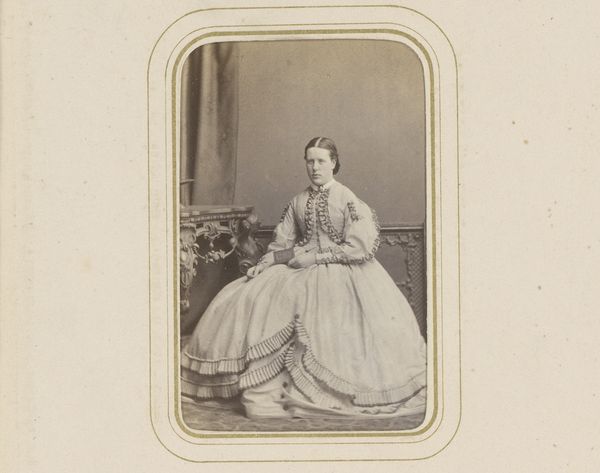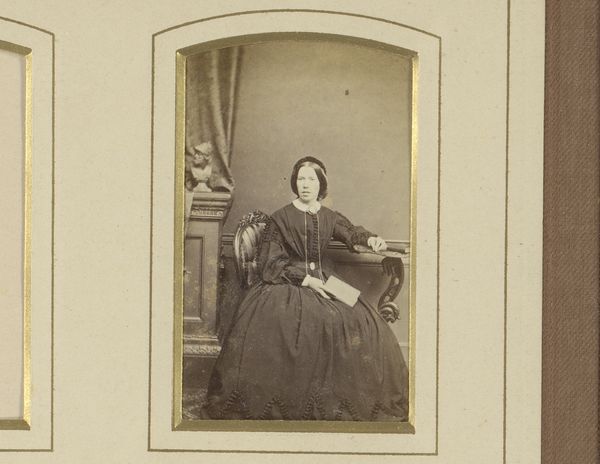
Dimensions: height 58 mm, width 101 mm
Copyright: Rijks Museum: Open Domain
Curator: What a beautifully composed piece of photography! We're looking at "Portret van een zittende vrouw," or "Portrait of a Seated Woman," dating from around 1860 to 1880 and held here at the Rijksmuseum. Editor: My first impression is of contained sorrow. The subject's pose and the subdued lighting create a somber, almost mournful mood. I wonder about the social context of this photographic portrait. Curator: Absolutely. Think about the materiality. Early photographic processes, often requiring long exposure times, dictated a certain stillness. It impacted how people were presented. There’s labor embedded here – the photographer’s craft, the sitter's patience, and the developing processes. The composition almost feels sculpted rather than captured, which speaks to the materials used at the time and what kind of impact the Realist movement had on the techniques utilized. Editor: Precisely. Photography in the mid-19th century was becoming increasingly accessible but still imbued with social meaning. Having one's portrait taken was a significant act, both for the individual and the family. The chair she’s sitting on looks very regal – do you think she came from money? How would such a photograph serve public perceptions and perhaps reinforce societal expectations of femininity during that period? Curator: It definitely served a status purpose and aided in memorialization and wider representation. Photography studios arose, making portraiture more readily accessible to middle-class families. However, there's still a stark difference to contemporary approaches as such techniques heavily involved various stakeholders and a slower process, compared to the rapid development of snapshots in the 20th Century. Editor: Yes, it's important to remember that photographic portraiture began playing a role in solidifying or redefining societal norms and class status, and her historical fashion contributes heavily to that feeling. Considering the era's socio-political climate adds another layer to appreciating how the public role of art like this shaped identity, while offering commentary on individual status. It's a complex dynamic that encapsulates history, identity and political meaning! Curator: Exactly, looking at the photograph today prompts reflections on how material constraints influenced visual representation and also offers glimpses into the intricate web of human relationships captured for posterity. Editor: It certainly provides fertile ground for exploring societal attitudes, technical processes, and personal histories embedded within art from this era. Curator: Agreed. An intriguing collision of forces captured in one photographic plate!
Comments
No comments
Be the first to comment and join the conversation on the ultimate creative platform.
